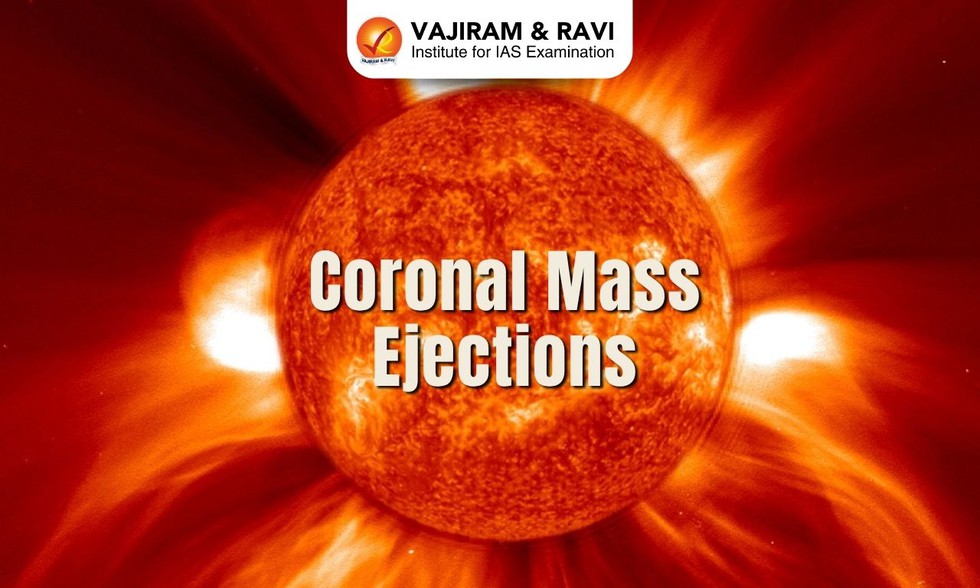About Coronal Mass Ejections:
- These are massive ejections of magnetized plasma from the Sun’s corona.
- How are they formed?
- They form similarly to solar flares—a result of the twisting and realignment of the sun’s magnetic field, known as magnetic reconnection.
- When magnetic field lines “tangle” they produce strong localized magnetic fields which can break through the surface of the sun at active regions, subsequently generating CMEs.
- CMEs usually take place around sunspot groups and are often accompanied by a solar flare, though the two don’t always occur in tandem.
- CMEs travel outward from the sun at speeds ranging from slower than 250 kilometers per second (km/s) to as fast as 3000 km/s.
- The fastest Earth-directed CMEs can reach our planet in as little as 15-18 hours.
- They expand in size as they propagate away from the Sun, and larger CMEs can reach a size comprising nearly a quarter of the space between Earth and the Sun by the time they reach our planet.
- CMEs, like solar flares, are most common during the solar maximum, a period in the sun’s 11-year cycle of activity when the star is at its most active.
- Impact on Earth: When such solar blasts are directed toward the Earth, they can cause geomagnetic storms capable of disrupting satellite operations, communication systems and power grids.
